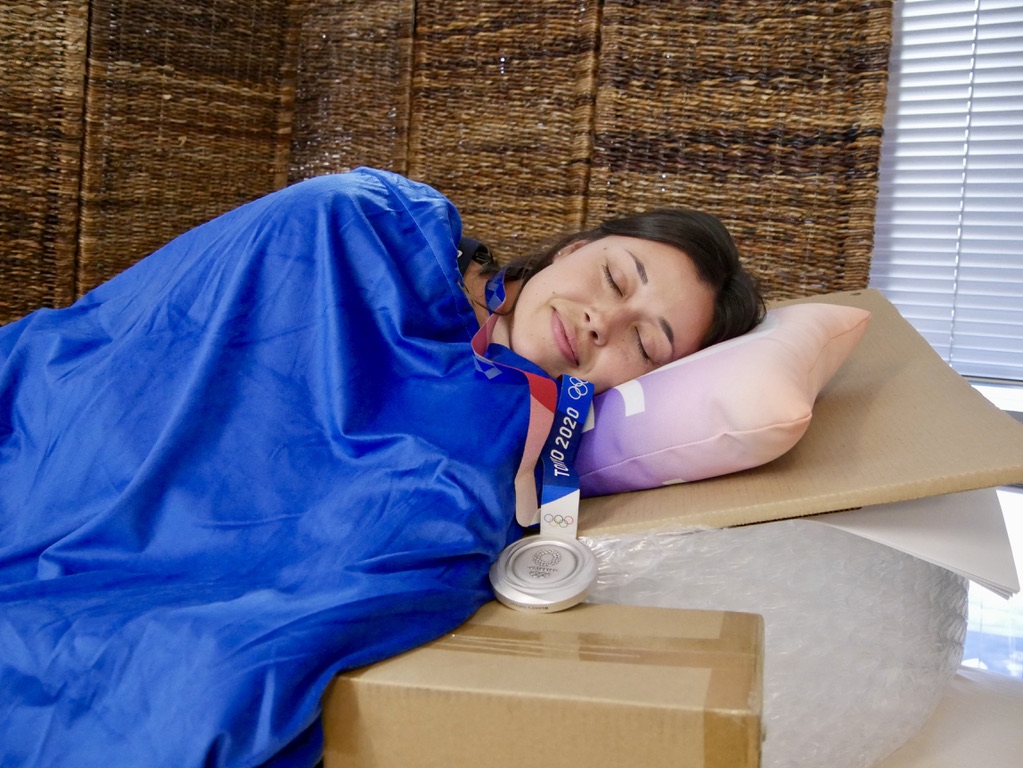Are the beds at the Olympics really made out of cardboard? A former Olympian chimes in

As the Olympic opening ceremony gets underway today, rumors have been swirling about the beds being made of cardboard. This week on our blog, we’re thrilled to bring you an exclusive interview with our very own Janie, a SleepScore Labs employee, former Olympic athlete, and silver medalist. Get ready for an exciting deep dive into her Olympic journey and the much-talked-about beds at the Olympic Village.
Introduce yourself: I’m Janie Takeda Reed, the Sales Development Representative at SleepScore, and I played Softball at the Tokyo 2020 Olympics.
What is your relationship like with sleep? As an athlete married to a fellow professional athlete, sleep has always been a huge priority. During my playing years, giving my all on the field during practice and games always led to great, restful nights of sleep. Becoming a mom was a huge challenge adjusting to disrupted sleep. I had never had any circumstances that forced me to deal with anything like that and it definitely had an effect on my mental health along with all of the other adjustments of becoming a mom.
What was your experience like at the Olympics? My experience at the Olympics was unique because of the pandemic. There were no fans allowed at the games which made it difficult to not have my family present, but all in all, it still felt like a dream staying in the village and getting to compete for my country on the biggest stage.
What can you share with us about the beds at the Olympics? Is it true that they are made out of cardboard? The bed frames are indeed made out of cardboard! And the beds themselves are made up of compressed plastic. They were not very comfortable at all and we actually had to send a staff member outside of the village to purchase mattress toppers.
Do you think that there needs to be improvements to the sleeping conditions for the athletes staying in the Olympic village? I understand the mission behind prioritizing sustainability because historically the Olympic games have created a lot of waste in the host cities. However, quality sleep is crucial as an elite athlete — for performance, injury prevention, and mental well being. We were already under a crazy amount of stress, and it was tough to come back at the end of a long day to a plastic/cardboard bed.
Imagine asking Simone Biles to sleep on a cardboard bed and then go out and perform the best routine of her life. Athletes are at their best when they sleep well. Sleep is not a luxury; it’s a necessity for peak performance. With the physical and mental demands placed on Olympic athletes, ensuring they have comfortable and supportive sleeping conditions should be a top priority. The right sleep environment can make all the difference in an athlete’s performance, recovery, and overall well-being.
It’s clear that while sustainability is important, so is the health and performance of the athletes. As we look forward to future Olympic Games, let’s hope that finding a balance between eco-friendly solutions and optimal sleep conditions becomes a key focus. After all, the athletes’ ability to perform at their best on the world stage should never be compromised.



